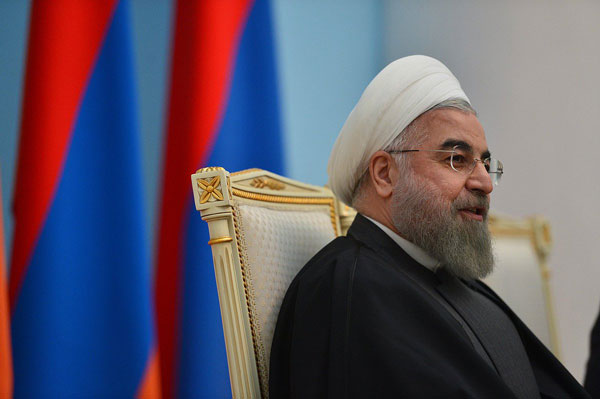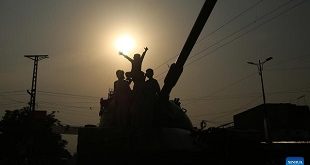
Tehran, Iran | AFP | Gunmen and suicide bombers carried out coordinated attacks on Iran’s parliament and the tomb of revolutionary founder Ruhollah Khomeini on Wednesday, state media reported, killing at least three people.
It was not immediately clear who was behind the attacks but Iran is a key player in the fight against the Islamic State group in both Syria and Iraq.
A security guard and one other person were killed when four gunmen burst into Tehran’s parliament complex with rifles and a pistol, according to the ISNA news agency.
One of the attackers blew himself up on the fourth floor of the parliament office building as the siege continued.
In the coordinated mid-morning attack, a gardener was reported dead and several more injured when armed assailants entered the grounds of Khomeini’s mausoleum in the south of the city.
A female suicide bomber blew herself up outside the shrine, while another woman was arrested carrying six grenades, according to the Mizanonline news agency.
Parliament was in session as the attacks unfolded, with live footage showing members continuing with routine business even as gun battles were reported in surrounding office buildings.
Speaker Ali Larijani dismissed the attacks, saying they were a “trivial matter” and that security forces were dealing with them.
Intensified gunfire was heard from the neighbouring offices as Fars news agency reported police had launched an assault.
– Shrine attack –
An official at Khomeini’s mausoleum in south Tehran said “three or four” people had entered via the western entrance and opened fire, killing the gardener and wounding several people, according to Fars.
The news agency published photos showing the suicide bomber blowing herself up outside.
The shrine lies around 20 kilometres away (12 miles) from parliament and houses the body of Khomeini, who led the Islamic revolution in 1979.
The ILNA news agency said security forces were dismantling a bomb inside the shrine and that firing was still going on around the site.
It was not clear if the assailants had been able to enter the actual mausoleum.
The city was on lockdown, with streets blocked and parts of the metro closed. Journalists were kept away from the shrine by police.
Interior Minister Abdolrahman Fazli told ISNA he had convened a special meeting of the country’s security council.
– Targeted by IS –
Iran has been singled out as a target by jihadist groups, including IS, but has largely escaped attacks within its urban centres.
Iran, the predominant Shiite power, has been helping both Iraq and President Bashar al-Assad’s regime in Syria to battle the Sunni extremist group.
IS is under increasing pressure in both countries, having lost significant territory in the face of offensives now targeting its last two major urban bastions, Raqa in Syria and Mosul in Iraq.
IS published a rare video in Persian in March, warning that it “will conquer Iran and restore it to the Sunni Muslim nation as it was before.”
IS and other extremists consider Shiites to be apostates, and the video accuses Iranians of persecuting Sunnis over the centuries and into modern times.
Militant groups are also known to operate in Iran’s southeastern Sistan-Baluchistan province, which borders Pakistan and has a large Sunni community.
Jaish-ul Adl (Army of Justice), which Tehran accuses of links with Al-Qaeda, has carried out several armed attacks inside Iranian territory in recent years.
Iran’s supreme leader Ayatollah Ali Khamenei said on Sunday that attacks by IS in Europe and elsewhere showed that Western policies in the Middle East have backfired.
“This is a fire that (Western powers) themselves ignited and now has backfired on them,” he told a gathering of senior officials in Tehran.
RELATED
Dramatic video via @IranNewspaper of attack on #Iran‘s parliament. pic.twitter.com/HzZIvBafbZ
— Jon Williams (@WilliamsJon) June 7, 2017
 The Independent Uganda: You get the Truth we Pay the Price
The Independent Uganda: You get the Truth we Pay the Price



